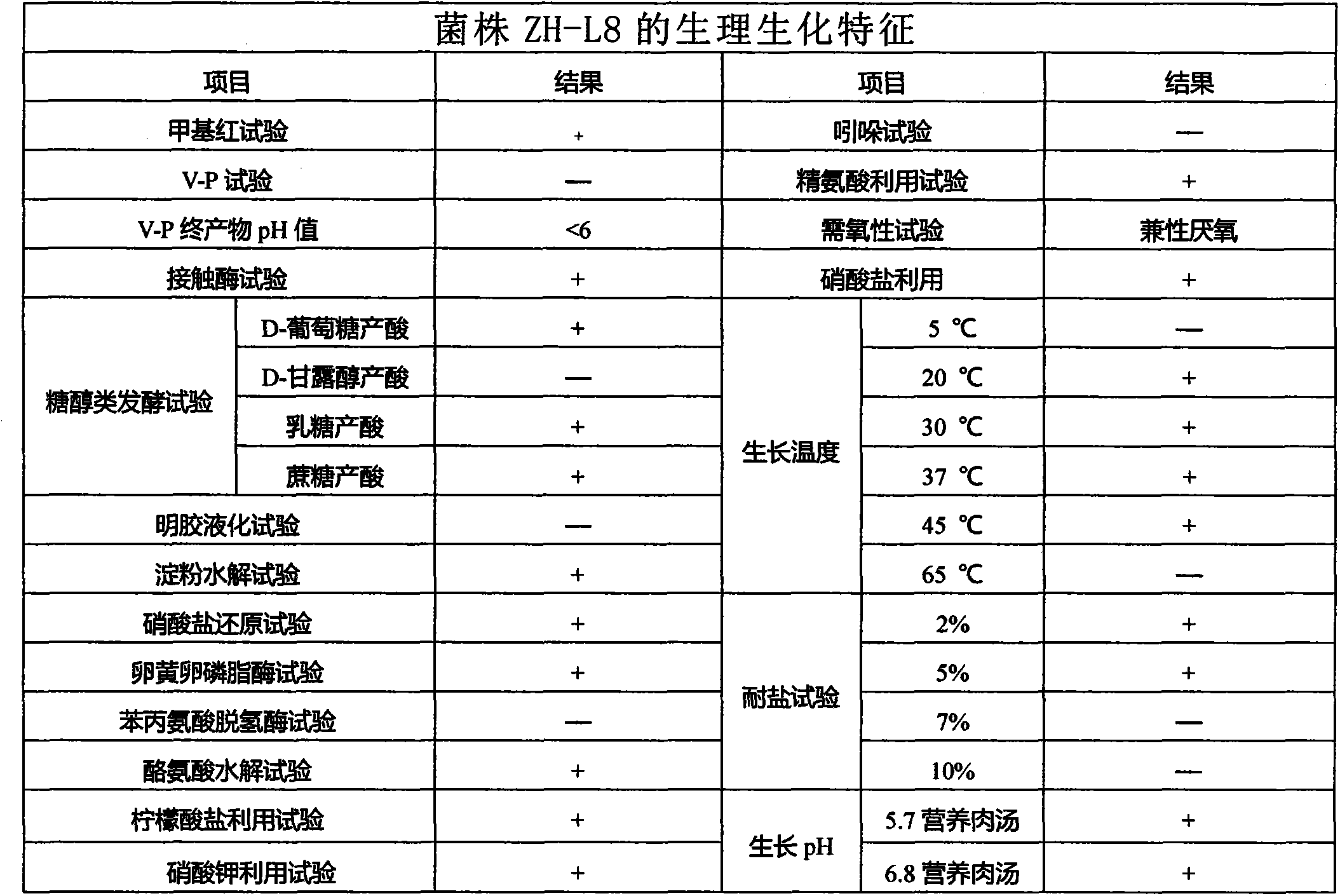New bacterial strain degrading polycyclic aromatic hydrocarbons with five rings or six rings, andacquiring method and application of same
A technology of polycyclic aromatic hydrocarbons and new strains is applied in the field of biological treatment of environmental pollutants, which can solve the problems of unsatisfactory degradation effect of polycyclic aromatic hydrocarbons, and achieve the effect of repairing polluted sites.
- Summary
- Abstract
- Description
- Claims
- Application Information
AI Technical Summary
Problems solved by technology
Method used
Image
Examples
example (1
[0054] Example (1): Degradation of ZH-L8 to benzopyrene monomer
[0055] Inoculate the ZH-H2 single colony preserved after the PAH monomer acclimatization in the above step (4) into LB medium and activate for 48 hours to obtain the enriched bacterial liquid.
[0056] Inoculate 10% enriched bacteria solution into 20mL sterilized aqueous phase inorganic salt liquid medium containing 10mg / benzopyrene as the experimental group, and another control group without enriched bacteria solution, in 150rmp, 30°C shaker Shake culture in the dark for 7 days.
[0057] After the incubation time is over, take 25ml of chromatographically pure n-hexane solution and add it to the Erlenmeyer flasks of the experimental group and the control group, ultrasonically extract for 5 minutes, so that all the PAHs sticking to the wall are soaked into the n-hexane solution, and then the Erlenmeyer flasks are placed in the n-hexane solution. In a 250rmp oscillator, after oscillating for 40 minutes and ultras...
example (2
[0059] Example (2): Degradation of indenopyrene monomer by ZH-L8
[0060] Inoculate 10% enriched bacteria solution into 20mL sterilized aqueous phase inorganic salt medium containing 10mg / L indenopyrene as the experimental group, and another control group without enriched bacteria solution, in 150rmp, 30°C shaker Shake culture in the dark for 7 days, the method of extracting PAHs is the same as example (1), measure the residual rate of polycyclic aromatic hydrocarbons in the solution of the experimental group and the control group respectively, then apply the residual rate of the experimental group and the control group, according to the degradation formula, Calculate the degradation efficiency.
[0061] The experiment was repeated three times, and the results were averaged. The degradation rate of indenopyrene is 42%.
example (3
[0062] Example (3): Degradation of ZH-L8 to dibenzoanthracene monomer
[0063] Inoculate 10% enriched bacteria solution into 20mL sterilized aqueous phase inorganic salt medium containing 10mg / L dibenzanthracene as the experimental group, and another control group without enriched bacteria solution, shake at 150rmp, 30°C Shake culture in medium dark place for 7 days, the method for extracting PAHs is the same as example (1), measure the residual rate of polycyclic aromatic hydrocarbons in the solution of experimental group and control group respectively, apply the residual rate of experimental group and control group then, according to the degradation formula , to calculate the degradation efficiency.
[0064] The experiment was repeated three times, and the results were averaged. The degradation rate of dibenzanthracene was 72%.
[0065] The embodiment of the present invention also provides the application of the above-mentioned new strain to the degradation of the 6-ring p...
PUM
 Login to View More
Login to View More Abstract
Description
Claims
Application Information
 Login to View More
Login to View More - R&D
- Intellectual Property
- Life Sciences
- Materials
- Tech Scout
- Unparalleled Data Quality
- Higher Quality Content
- 60% Fewer Hallucinations
Browse by: Latest US Patents, China's latest patents, Technical Efficacy Thesaurus, Application Domain, Technology Topic, Popular Technical Reports.
© 2025 PatSnap. All rights reserved.Legal|Privacy policy|Modern Slavery Act Transparency Statement|Sitemap|About US| Contact US: help@patsnap.com



